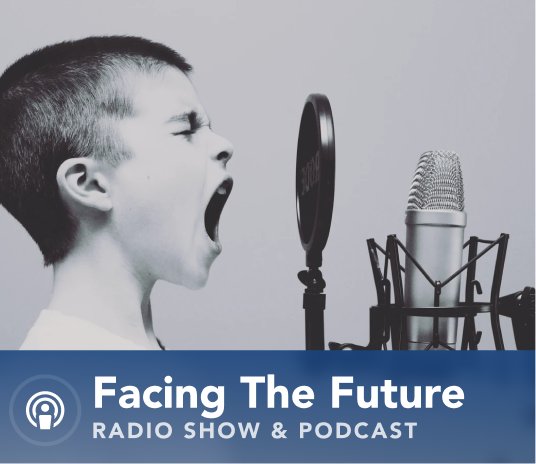This week on Facing the Future we got an update on the latest inflation and economic growth numbers from Douglas Holtz-Eakin, President of the American Action Forum and former Director of the Congressional Budget Office (CBO). Despite some encouraging short-term numbers, Holtz-Eakin sees a few warning signs for 2024. We also discussed his new issue brief on employment-based immigration. Concord Coalition policy director Tori Gorman and chief economist Steve Robinson joined the conversation.
The economy has had a lot of competition for headlines recently, but it’s still very much on the minds of many Americans. Last week we got some new reports that shed light on the current state of the economy and where it may be headed.
One report was the October Personal Consumption Expenditures (PCE) price index. On an annualized basis, the PCE price index was 3.0 percent, which was down from 3.4 percent in the prior month. Excluding food and energy, core PCE inflation declined from 3.7 percent last month to 3.5 percent in October. All of this is important because the PCE index is the Federal Reserve’s preferred measure of inflation.
Holtz-Eakin explained that while the rate of inflation has come down, it is still higher than the Federal Reserve’s target rate of 2 percent.
“People like to look at core inflation,” he said, “which gets rid of food and energy prices, not because it’s a better measure of inflation. In fact. you have to pay for food, and you have to pay for energy. So having those prices matters. But it’s a better predictor of where the overall index is going to end up two, three or four years from now. Core inflation came in at 3.5 percent, down from 3.7 the month before, and the core peaked at 5.6, so that’s progress. But 5.6 percent, down to 3.5, isn’t quite as dramatic as looking at all these top lines, because the top lines are heavily influenced by energy prices. Energy prices last month fell at an annualized rate of 27 percent. That’s not going to continue. And that’s why the top line got pulled down.”
Another new report last week was the Fed’s November 2023 Beige Book, which describes changes in economic conditions since the last report in each of the 12 regional districts of the Federal Reserve system.
“On balance,” the Fed reported, “economic activity slowed since the previous report, with four Districts reporting modest growth, two indicating conditions were flat to slightly down, and six noting slight declines in activity.”
That somewhat downbeat report contrasted with an estimate by the Bureau of Economic Analysis that 2023 third quarter real gross domestic product (GDP) grew by a very robust 5.2 percent.
“The Beige Book is a really valuable resource,” Holtz-Eakin said, “because the GDP report is a quarterly report, and the most recent report is for the third quarter. So that covers July, August and September. And so all of those statistics that we rely on so much are really economic history. The Beige Book is about what is happening now. It’s not as statistically refined, and it’s more anecdotal, but the Fed is learning what’s going on in real time.”
What concerns Holtz-Eakin is that business spending has slowed, which is reflected in both the third quarter GDP report and the more recent Beige Book.
“The November Beige Book says we hit stall speed,” he said. “It reflects what the business community has been saying: we’re flatlined. So I take it seriously, it’s not definitive, but It’s on my worry list as to what’s going on out there right now.”
In the final segment we turned to immigration reform. Holtz-Eakin recommended an increase in legal immigration based on economic need. “We could be much more aggressive in the use of employment-based immigration tools, visas, and the like,” he said. “The native born U.S. population doesn’t have a lot of babies, so we don’t even have replacement level fertility. In the absence of immigration, the U.S. shrinks, the population gets older and smaller, the economy becomes less vital. The flip side of that is that everything about America’s future resides on the decisions it makes about its immigration policy.”
Referring to the slowing labor force growth rate, Holtz-Eakin observed, “In the 20th century we grew fast enough that GDP per capita averaged 2.4 percent growth per year. That means that it doubles roughly every 29 years. In the 21st century, from 2001 to now, it’s been averaging 1.4 percent. If we had kept up with 2.4 percent, there would be $19,000 per person more in the United States right now. I don’t know about you. I’d take the $19,000.”
“And it’s part of our fiscal problem as well, he continued. “If we had kept that rate of growth, GDP would be higher, and tax revenue would be $1.2 trillion dollars a year higher. We have $20 trillion in deficits over the next 10 years. Twelve trillion dollars would be useful at the moment.”
He concluded, “We have fiscal problems. We have a big growth problem. We need to solve them. Immigration fits in. It is a way to do that.”
Hear more on Facing the Future. I host the program each week on WKXL in Concord N.H., and it is also available via podcast. Join us as we discuss issues relating to national fiscal policy with budget experts, industry leaders, and elected officials. Past broadcasts are available here. You can subscribe to the podcast on Spotify, Pandora, iTunes, Google Podcasts, Stitcher, or with an RSS feed. Follow Facing the Future on Facebook, and watch videos from past episodes on The Concord Coalition YouTube channel.





